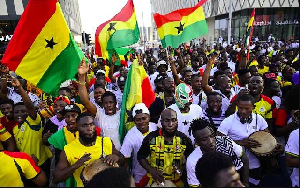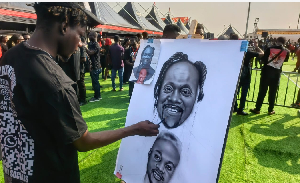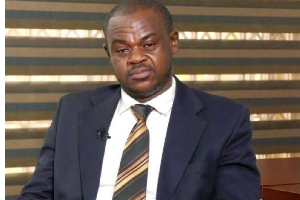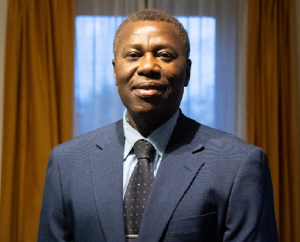Award winning Broadcast Journalist, ‘Chairman General’ Kwami Sefa Kayi believes the media has totally lost its ethical standards in how information is packaged for its audience.
The host of Peace FM’s “kokrokoo” programme who was commenting on the stations “Entertainment Review” programme, strongly condemned how some media houses especially television stations showed raw gory images of dead bodies of the recent floods and gas explosion victims in Accra on Wednesday June 3, 2015 which has claimed about 200 human lives and destroyed millions of properties.
The morning show host lamented at how the ethics of journalism and broadcasting worldwide do not permit such graphic images to be shown with impunity without any kind of censorship or cautioning viewers before it is broadcast and particularly at the early hours of Thursday, the morning after the disaster.
He said that it was unacceptable and went ahead to mention names of some television stations including UTV and Metro TV who were guilty of what he called unprofessional journalistic practice.
“I don’t think we are losing our ethical standards. For me, we’ve already lost it. It is gone because I had a case with my own people UTV so I will start from my own house. The way UTV broadcast some of the pictures was not good at all. It was in a very bad taste, especially when they gave close up shots of the faces of burnt and charred bodies of dead people live on television…it was very worrying,” he chastised the television station.
He said he also saw similar images on Metro TV where dead bodies in horrible state were being shown.
“..Seriously I was not too happy when I saw those pictures on TV,” he said.
He also made mention of Daily Guide as one of the newspapers who published similar pictures even though he admitted that their pictures were far better because they didn’t show any faces.
According to Kwami Sefa Kayi, it would be disheartening and heartbreaking that someone leaves home to go to work and unfortunately meets this tragedy and dies and the first place their relatives will see their dead bodies is on national television. He lambasted all television stations that showed such raw images, adding that just watching those visuals on TV can even make people collapse and die in their houses.
Even though he agrees that the media is supposed to give information to the people as it is, he said his only problem is how it is done.
“I know that as journalists we bring the report as it is and sometimes it is good to give the true picture of what is really happening but when you are going to do something like that you warn viewers ahead, but this was shown early morning at about 7am when people were preparing to go out and they put on their TV’s and this is what they see. I think is inappropriate,” he added.
He also criticized some websites who published similar images on their pages after the incident.
“Beyond ethics there is common sense and there is sensitivity as well as sensibility. People’s dead sons and daughters, people’s wives and mothers and people’s husbands and fathers and their faces are being shown on national television. I think this hasn’t helped in anyway, especially the traditional media we didn’t help ourselves at all with this”.
He disagreed with those arguing that social media is pressurizing the mainstream media to publish such images to drive more ratings and keep up with the completion.
“What is the competition with social media? Because someone who doesn’t have laptop or a smart phone cannot go on social media but television is free to air with kids and the faint-hearted people all watching. So we in the traditional media should even be more responsible at this time that social media is growing and becoming more and more uncontrollable. This is the time we have to show the clear difference between what is sensationalism and what is responsibility”.
Kwami cited the September 11 World Trade Centre disaster in America as a typical example and how it was reported in the media. He explained that over 3000 people died through that disaster and there were dead bodies all over but none of mainstream international media including CNN, BBC, Sky News, Aljazeera and all the others published faces of dead bodies or close up shots of victims but yet still they were able to report for the whole world to have a true picture of what happened.
Asked what the media should do to bring back the values of journalism and raise the falling standards, the 4 times ‘Best Radio and TV Personality of the year’ winner said;
“the ability to bring the story to the listener, the viewer or the reader without necessarily being graphic is how we can report for the audience to get the story and enjoy with some ease. We don’t have to show bloody pictures with people’s intestines gushing out of their stomach. There are so many ways of doing this and I am very sure the Editors in the various Newsrooms have creative senses and professional ethics that can go into thinking deeply through every report before it is broadcast or published to the audience and even if it is really necessary to show such graphic pictures we should give advanced warning to viewers before showing it”.
Entertainment of Friday, 12 June 2015
Source: peacefmonline.com
'The media has lost its ethical standards' – Kwami Sefa Kayi
 Kwame_Sefa_Kayi
Kwame_Sefa_Kayi












